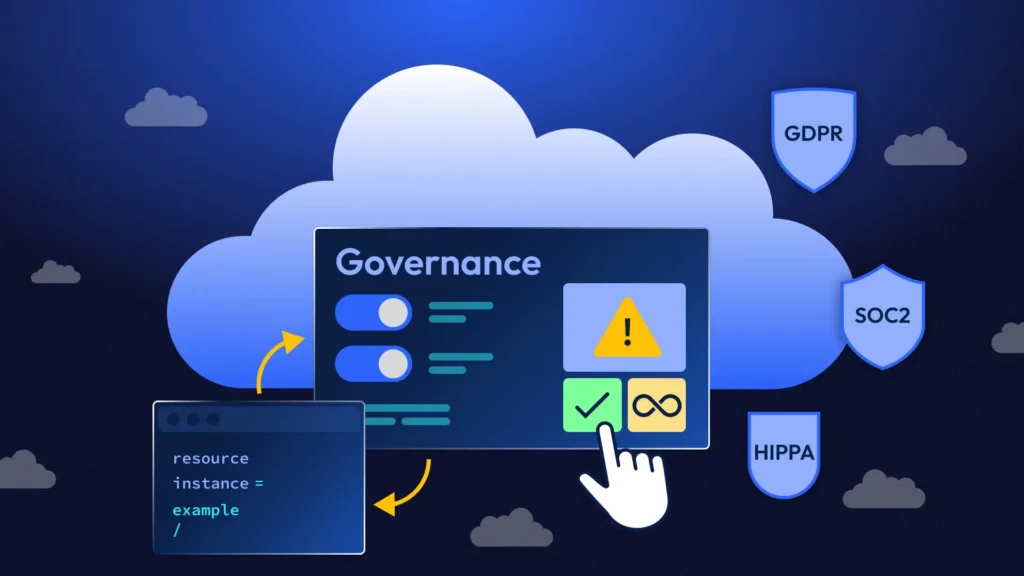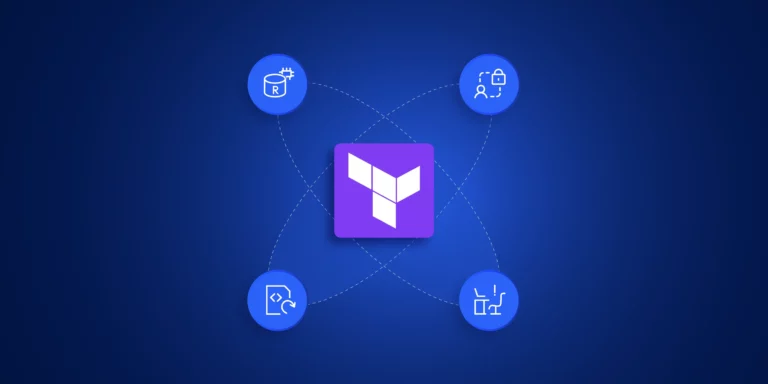What is Cloud Compliance?
Cloud compliance and governance help organizations enjoy the benefits of cloud technologies while ensuring data privacy, security, and integrity. To reduce operational and legal risk, ensure your cloud environment meets all business regulations. For example, this will help reassure customers and partners that you are a trustworthy company.
Cloud compliance is critical for DevOps teams, SREs, and cloud infrastructure leaders. They specify and build cloud environments and cloud-native apps to use in them. Understanding how to achieve and maintain cloud compliance without compromising business performance is an important DevOps skill.
Looking to go deeper into specific compliance use cases? Here are expert guides that explore how DevOps teams can stay secure and compliant at scale:
📚 Explore DevOps Compliance Use Cases:
- ⚖️ FedRAMP Compliance for DevOps: Discover how to standardize cloud security practices across U.S. federal systems using Infrastructure as Code.
- 🔐 NIS2 Compliance for DevOps Automation: Learn how to meet the EU’s latest critical infrastructure mandates through automated cloud compliance workflows.
- 🧠 Cloud Governance & DevOps Burnout: Explore how infrastructure compliance frameworks and automation reduce risk and team fatigue.
- 💳 PCI DSS 4.0 DevOps Compliance Checklist: Step-by-step infrastructure controls to secure cardholder data in cloud environments.
Why is Cloud Compliance Important?
Cloud compliance is growing increasingly important as cloud adoption accelerates, and cloud environments become more complex. Regulators are introducing more rules to ensure secure, resilient cloud usage. From a DevOps perspective, complying with these regulations is legally and ethically obligatory.
In practice, cloud compliance is not straightforward. Cloud compliance requires expertise, resources, and automation to stay ahead. As a result, DevOps leaders are investing in automated cloud compliance tools. These support monitoring, fast remediation, and audit readiness..
What is Cloud Governance?
Cloud governance includes all the processes and safeguards that keep your cloud environment compliant.
Multi-cloud adoption and AI-based provisioning, combined with rising regulation, make cloud governance complex. Using cloud governance frameworks and best practices helps create structure around cloud compliance.
Regulations that Require Cloud Compliance
The list of regulations that contain requirements relating to cloud environments is considerable. Organizations must comply with general data privacy and security regulations as well as those that apply specifically to their industry. Some regulations apply only to specific geographies but have extra-territorial application for companies based outside those areas that wish to do business with customers or organizations residing there.
Common Regulations
- FedRAMP compliance for DevOps:
- The U.S. government uses the Federal Risk and Authorization Management Program (FedRAMP). This program standardizes cloud security. It ensures that federal agencies have consistent protection.
- Learn what DevOps should know about FedRAMP compliance.
- GDPR compliance: The EU enforces the General Data Protection Regulation (GDPR), protecting personal data and ensuring privacy rights for individuals and organizations.
- CCPA compliance: The California Consumer Privacy Act (CCPA) is a privacy law that gives California residents more control over their personal data. Organizations need to consider how they are protecting personal data.
- ISO 27001: ISO developed ISO 27001 to define global standards for information security management and safeguarding data with minimal risks.
- HIPAA compliance for DevOps: The United States enforces the Health Insurance Portability and Accountability Act (HIPAA) to protect the confidentiality and security of personal information in the healthcare industry.
- DORA (EU regulation): DORA stands for DevOps Research and Assessment. It is a framework that helps DevOps teams measure and improve their software delivery.
- Learn how working with DORA can reduce DevOps Burnout.
- NIS2 Directive: The NIS2 Directive is an EU regulation that strengthens cybersecurity requirements for critical infrastructure and essential services.
- Explore NIS2 compliance for DevOps.
- SOC 2: SOC2 is a security and compliance framework that ensures service providers securely manage customer data based on trust service criteria like security, availability, and confidentiality.
- Find out how to achieve SOC2 compliance with Terraform.
- PCI DSS: PCI DSS regulates the payment card industry to secure data by efficiently handling cardholder information and reducing data breaches.
- Read our PCI-DSS 4.0 DevOps compliance checklist.
This is not an exhaustive list, but it gives an idea of the scale of the cloud compliance challenge DevOps teams face.
Who is Responsible for Cloud Compliance?
Cloud compliance follows a shared responsibility model where Cloud Service Providers (such as AWS, Azure and GCP) assume responsibility for the security of the cloud and customers are responsible for security of everything they put in the cloud. This means they are responsible for ensuring that all data and the way resources are configured and secured must comply with the relevant regulations, such as those listed above.
Increasingly within the organization, responsibility for cloud compliance resides with Cloud Architects, DevOps Directors and their teams. By establishing and enforcing cloud best practices, supported by automated quality controls, rigorous monitoring, and rapid remediation, cloud architects and DevOps directors can meet the – not inconsiderable – challenges of cloud compliance. .
What are the 3 Challenges of Cloud Compliance?
The key challenges of cloud compliance lie in scale, complexity, and the fast-moving nature of cloud environments.
- Scale: Today’s mature cloud environments are sprawling. They have grown organically over time and few organizations have full visibility over what is in their cloud and how their infrastructure is configured. This presents a scale challenge for compliance.
- Complexity: The regulatory environment is large and growing. From data sovereignty and privacy issues to cybersecurity standards and reporting requirements, the sheer volume of regulations governing organizations, their complicated stipulations and relationships cause headaches for compliance teams.
- Dynamism: A competitive business needs a cloud environment that is agile, flexing and adapting with the demands of the business. Modern cloud environments have evolved to meet this need, but compliance can’t always keep up – especially if teams are using manual methods.
Cloud Compliance Tips for DevOps and Cloud Managers
Designing a cloud compliance strategy can be daunting for DevOps and Cloud managers, but there are some good places to start:
Understand your regulatory environment: As mentioned earlier, there are a lot of regulations in the mix, but they won’t all apply to your business or geographic region. Knowing which you need to cover helps you identify the right governance frameworks to use.
Automate compliance monitoring: automation is the only way to build confidence in your compliance position. Many cloud service providers offer native solutions for monitoring security controls and compliance and you can supplement these with tools that continuously monitor and remediate your infrastructure configuration and enforce policies when users are provisioning environments.
Implement role-based access control: Ensure that sensitive data is only accessible to authorised personnel and regularly review permissions to check users should still have access. Revoke unnecessary access rights in a timely way.
Encrypt data: Use hardware and software-based encryption solutions to make sure information is protected in the vent of a breach.
Build a compliance culture: It’s not just the technology and infrastructure that needs to meet regulatory standards. Many stipulate that employees must be regularly trained to identify cybersecurity threats and keep the organisation within compliance boundaries. This can only be achieved if senior leaders set expectations that everyone is responsible for compliance in relation to carrying out their role.
Cloud Governance and Infrastructure Compliance Best Practices
There is a lot of crossover between the different regulations governing cloud deployment. To avoid duplicating effort, organizations should use a cloud governance framework that identifies commonalities and helps teams implement robust policies, auditable controls, and rigorous monitoring that covers several regulatory requirements simultaneously.
A strong cloud governance framework also helps DevOps identify where automation can be used to mitigate risk, such as when provisioning new cloud resources and monitoring the cloud environment.
Your cloud governance framework should incorporate best practices across a variety of domains, including identity and access management, resource visibility and monitoring, cost management and optimization, security, change management and automation, and monitoring.
Take a deeper dive into cloud governance framework essentials and best practices in our DevOps guide to cloud optimization and total control.
DevOps Tools to Support Compliance
Cloud compliance can be burdensome if DevOps teams don’t have the right tools. Monitoring and maintaining a compliant cloud environment manually will leave the team continuously battling to keep pace with the evolving business and the threats it faces. This compromises agility and prevents cloud scalability.
Infrastructure as Code (IaC) supports automated cloud governance and compliance. Tools such as AWS Terraform in combination with ControlMonkey’s self-service infrastructure solution, drift detection and automated remediation, and cloud infrastructure disaster recovery simplify and streamline cloud compliance. This saves hundreds of hours and allows the team to serve the business with a fast, compliant, standardized cloud environment.
Why use ControlMonkey for Cloud Compliance?
ControlMonkey is your partner for cloud compliance. Our tools help you create rules that prevent non-compliant resources from going into production. They also keep your environments compliant without hurting productivity.
We offer the facility to turn on compliance standards on specific environments, with a solution that works in one-click straight out of the box and enforce regulations directly within your infrastructure CI/CD. It can block the provisioning of non-compliant resources before they reach production. Co audit tool also simplifies gathering the evidence your auditors need.
Learn more about how ControlMonkey delivers cloud compliance. Book a demo.











